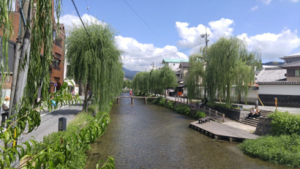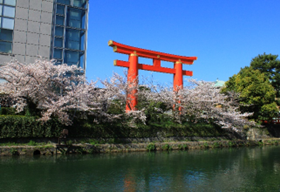The kindness of Kyoto culture
Yoshie Doi
 |
 |
 |
Togetsukyo Bridge Kyoto Shirakawa
After announcing the winning entries of the 5th Annual Love Letters to Kyoto Competition, we received many comments and feedback from many people. Many of the works were wonderful, and we received happy reports from people saying that they read the works and always refer to them in relation to their own lives. It has already been 15 years since we began accepting entries in 2009. We would like to express our sincere gratitude for the opportunity to interact with so many people during this time.
As we carried out this open call project, we received advice from many people. One professor from a think tank in the United States said, “To know Japan is to know Kyoto. Knowing Kyoto will make you happy,” and that by making this message public to the world, both visitors and Japanese people would be happy.
Kyoto has a culture in harmony with nature and serves as a power source of a balanced culture between the material and spiritual worlds that can lead the world into the future.
Words not only convey information, but also emotions, and they have energy. They contain the energy and vibration of sound. The higher the energy content, the greater the impact. Kyoto dialect in particular is spoken in a soft and gentle manner, and conversations often get to the heart of the matter. The same is true of Kyoto culture.
Japanese people believe that gods reside in every tree and blade of grass, and have offered gratitude and reverence to nature. I believe this is a culture that has developed through the integration of “nature,” “gods,” and “people.” This DNA is engraved in our thinking.
A culture that has been passed down for over a thousand years has the advantage of “knowing the real thing.”
Recently, I read a book that I thought was amazing called “The World’s Best Home Cleaning Method.” It is a book in which a professional teaches how to clean at Haneda Airport. What I learned from it is that it carefully describes how to wring out, fold, and hold towels. Haruko Niitsu’s “The World’s Best Cleaning Method” actually reminds me of the Japanese customs of the time when Japan had a proud cleaning culture and it was customary to sweep the front entrance and the road and clean the toilet every morning.
When I was in elementary school, my mother told me to sweep the entrance and the road every morning before going to school.
Japanese people do not clean because they are “dirty,” but rather clean to “avoid getting dirty.” The Nishimura family, a shrine family along the Myojin River in Kamigamo, had two wells in their garden, the “Misogi Well” and the “Fujo Well,” where they purified and drained dirty water. “Purification” was a habit in their daily lives.
The river that flows out of Kamigamo Shrine is called “Nara no Ogawa” within the grounds, and changes name to “Myojin River” once it leaves the shrine. The idea of returning the water flowing from the gardens, which use the pure water of the Myojin River, to its original pure state was introduced in 1181, during the reign of Emperor Antoku. This system was created out of a desire to use water sparingly, even in an abundance of water.
Japan has an abundance of water and people have lived with it. We clean with water, we purify with water,and in the backyard of Kyoto culture there is love, knowledge and wisdom, and even the word “Kado-fuki” (sweeping gates) is like a rule for maintaining good relationships with neighbors.
I heard that in Kyoto, people clean their neighbors’ graves as they do their gate sweeping, and they visit their neighbors’ graves after cleaning them. I think that love, not being too pushy and sharing kindness, is what lies behind Kyoto culture. I hope that we can all work together to build a city where we can strengthen our mental muscles, reset our minds, and find peace of mind.
The end of document
Translated by Masami Otani
